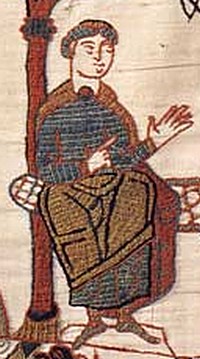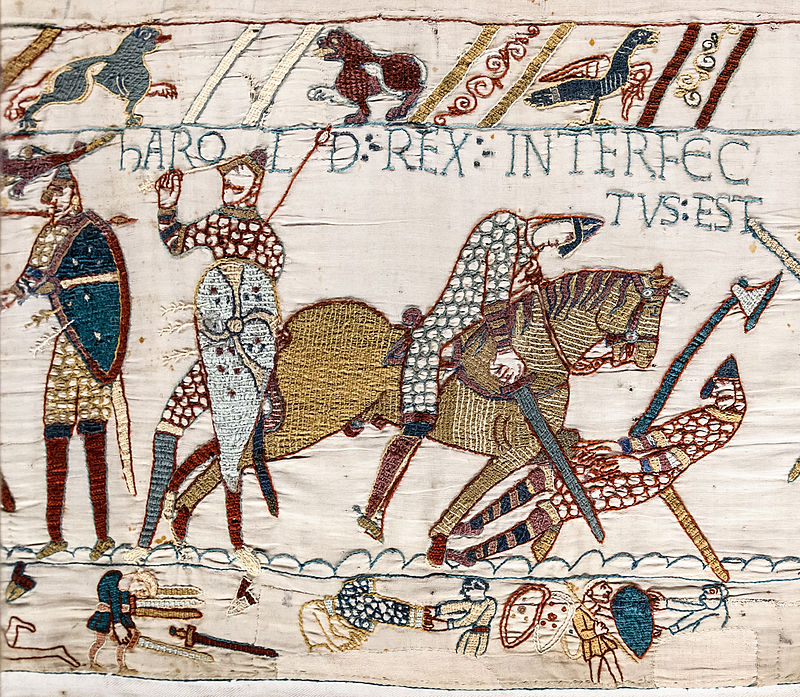The Bayeux Tapestry is a unique artefact of 11th century. The tapestry tells the story of the of the events surrounding the conquest of England by William, Duke of Normandy in 1066 in a 70 meters long embroidery. It is undoubtedly a masterpiece of Romanesque art.
Even though, according to the popular belief the Bayeux Tapestry was crafted by Queen Matilda and her ladies-in-waiting, but the truth is that no one knows for sure who created the Tapestry. The majority of historians believe that Odo, the Bishop of Bayeux, who was William the Conqueror’s half-brother, commissioned the embroidery to decorate the nave of the new cathedral of Bayeux, consecrated in July 1077.

(Photo credit: Wikipedia)
The Bayeux Tapestry in numbers:
- 58 scenes
- 626 characters
- 202 horses
The Narration
The story in the Bayeux Tapestry starts in 1064 when the king of England, Edward the Confessor, give instructions to his brother-in-law Harold Godwinson to travel to Normandy in order to offer his cousin William the succession to the English throne. Harold’s ship sails towards Normandy and after many difficulties he sends a message to William, the Duke of Normandy, saying that the King of England has designated him as his heir to the throne. And when the king dies, Harold has himself crowned instead of William. Hearing this news William crosses the Channel in 1066 to reclaim his throne.

In September 1066, several hundred ships set sail, with 7000 men and about 200 horses on board. Among the boats is the ducal ship given by the duchess Matilda; the Mora stands out with a lantern blessed by the Pope at the top of the mast. In the morning the fleet arrives at the small port of Pevensey in Sussex and the Normans make their way towards Hastings.
On 14 October 1066 begins the decisive battle between the Normans and the Anglo-Saxon troops. The fighting is intense and as result there are so many dead that they take over the lower frieze of the Tapestry. The evening of 14 October 1066 is the abrupt ending to the story told by the Tapestry. The end of the embroidery is missing, although it is known that the story ends with the Anglo-Saxons fleeing at the end of the Battle of Hasting in October 1066.

The importance of the Bayeux Tapestry
The Bayeux Tapestry is a very important source of the medieval period in Normandy and England. Through the great number of items depicted, it provided details of everyday life in the 11th century as well as information about civil and military architecture such as castles, armours and seafaring in the Viking tradition.









You must be logged in to post a comment.